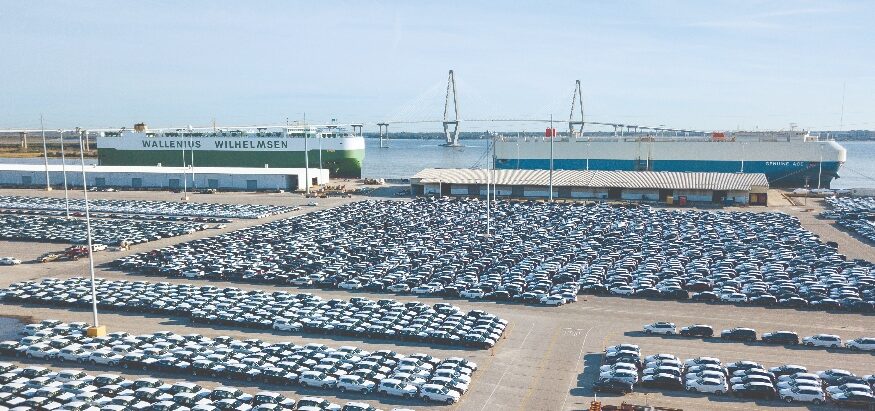Why the automotive industry continues to drive South Carolina’s economy
Jason Thomas //February 29, 2024//

The automotive industry led South Carolina’s exported goods, with sales more than double that of the next largest industry type. (Photo/Fred Rollison Photography)

The automotive industry led South Carolina’s exported goods, with sales more than double that of the next largest industry type. (Photo/Fred Rollison Photography)
Why the automotive industry continues to drive South Carolina’s economy
Jason Thomas //February 29, 2024//
South Carolina bucked a national trend in 2023 when it comes to a crucial measure of the economy.
The Palmetto State’s 2023 export sales totaled $37.3 billion, defying the national trend in which U.S. exports were down 2.2%, according to the U.S. Department of Commerce.
Since 2013, South Carolina exports have grown at an average rate of 4.4% year-to-year, according to a news release. Over the same period, U.S. exports grew at an average rate of 3% year-to-year.
The automotive industry led South Carolina’s exported goods, with sales more than double that of the next largest industry type (aircraft and aerospace components), the release stated. The state remains the nation’s top exporter of tires, and a national leader of completed passenger vehicles.
South Carolina’s top five exported commodities in 2023 were:
- Completed passenger vehicles
- Aircraft and parts
- Machinery and mechanical appliances (turbojets, turbopropellers, gas turbines, ball and roller bearings, appliances for boilers and pumps)
- Plastics
- Rubber (tires)
“Other countries continue to find that South Carolina offers the best products and services available anywhere, which is emphasized by the fact that our state saw an increase in trade despite a national decline in exports,” said Gov. Henry McMaster in the release. “By sending locally made goods throughout the world, we can continue to create more jobs and careers for South Carolinians while helping expand our economy.”
Related content: Production of key South Carolina export drives expansion for Charleston area plant
Related content: Auto systems manufacturer eyes e-mobility with South Carolina expansion
Notable 2023 trade statistics include, according to the release:
- In 2023, export sales totaled $37.3 billion, defying the national trend of U.S. exports dropping 2.2% over the same year. South Carolina’s 2023 total export sales figure is an 18% increase over 2022 export sales.
- For the eighth consecutive year, South Carolina is the national leader in the export of tires, with sales reaching $1.8 billion — representing 34.3% of the total U.S. market share.
- South Carolina also remains among the top in the nation in the export of completed passenger motor vehicles, with 2023 sales growing to $10.2 billion — accounting for 16% of the total U.S. market share.
- South Carolina exports reached 211 countries in 2023.
- Germany was the number one export market for South Carolina-made products and services, accounting for $4.7 billion.
- Belgium, a primary point of entry into the European Union market, entered South Carolina’s top five global export markets with an increase over 21% from 2022.
See also: How Hyundai Motor Group became the world’s third-largest automaker
See also: The Apple car is dead. Long live The Apple car (Play)
“South Carolina is a global state — we’re proud to be a leading destination and trade partner for companies and countries throughout the world,” said Secretary of Commerce Harry M. Lightsey III in the release. “Growing our international trade and exports network makes our economy more resilient, more diverse, and more competitive for long-term economic development success.”


















